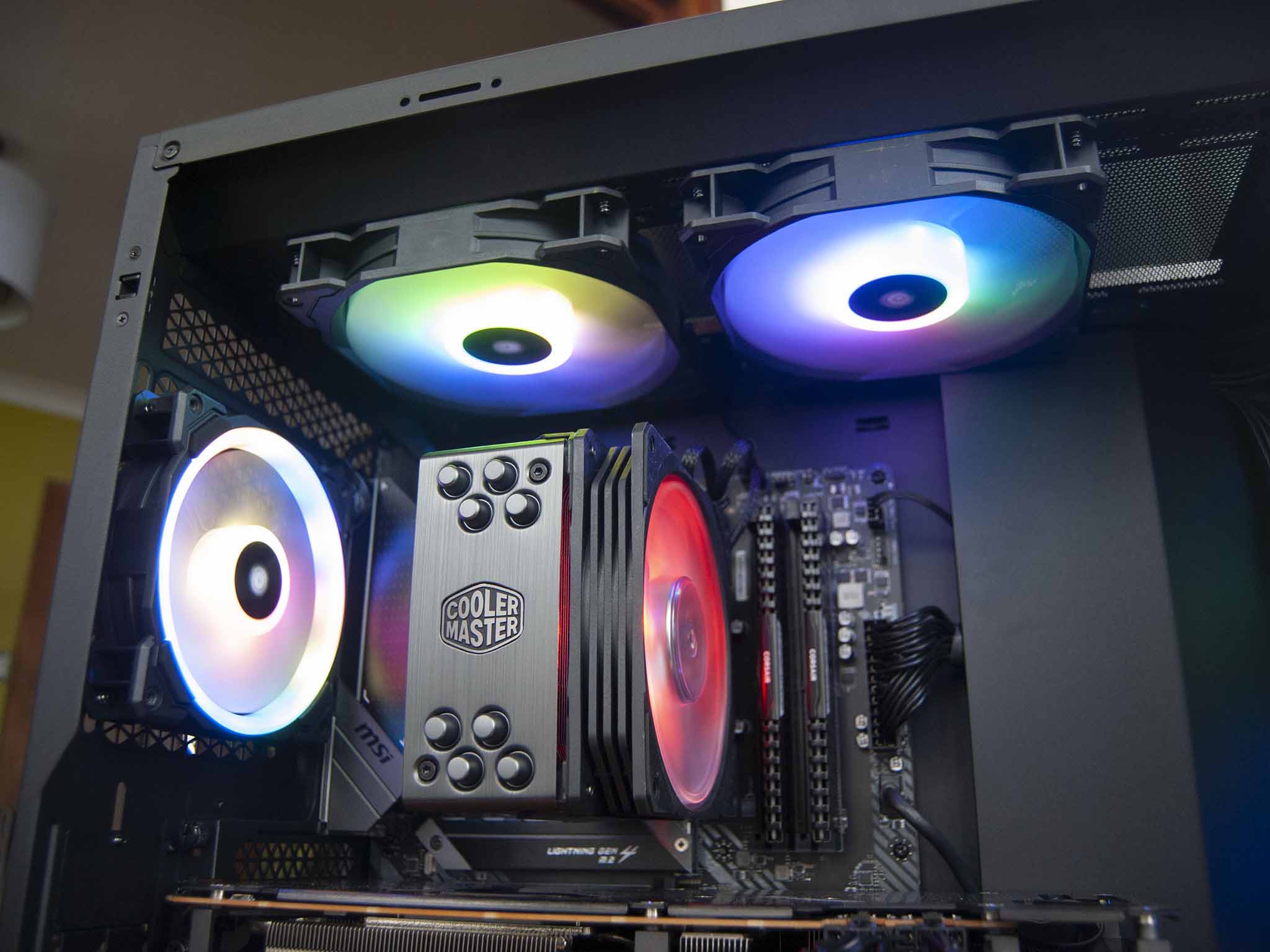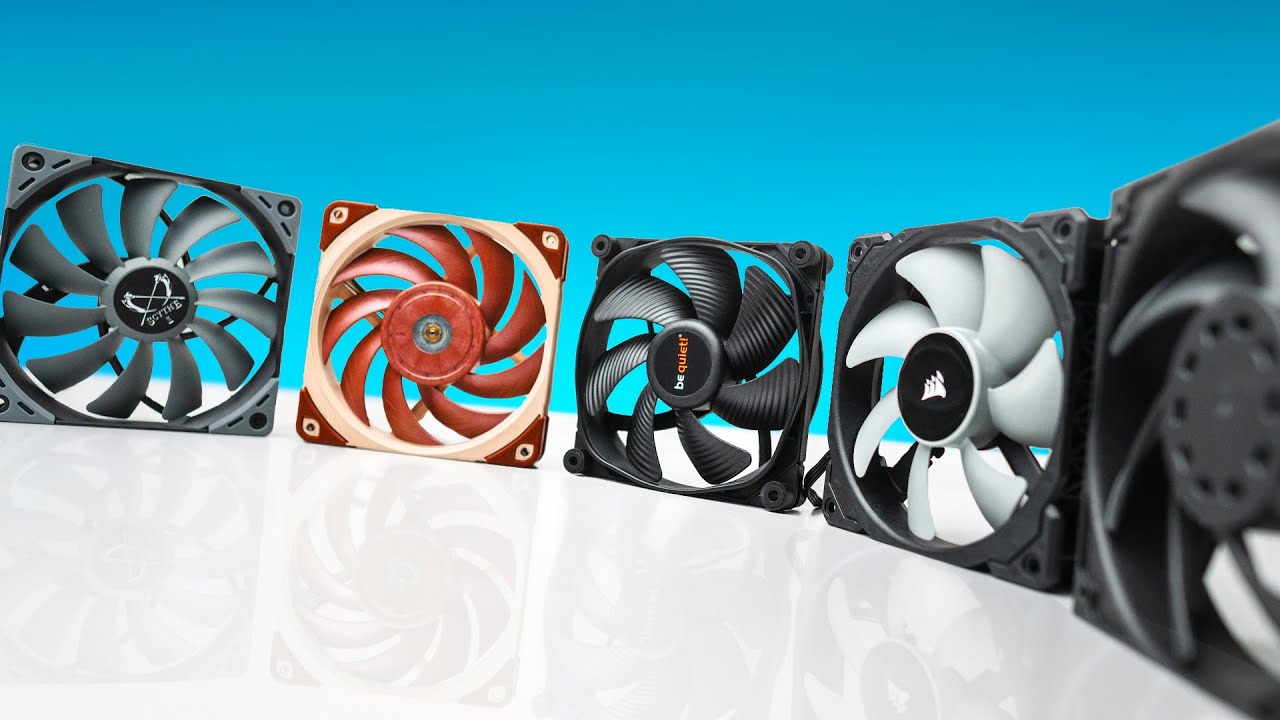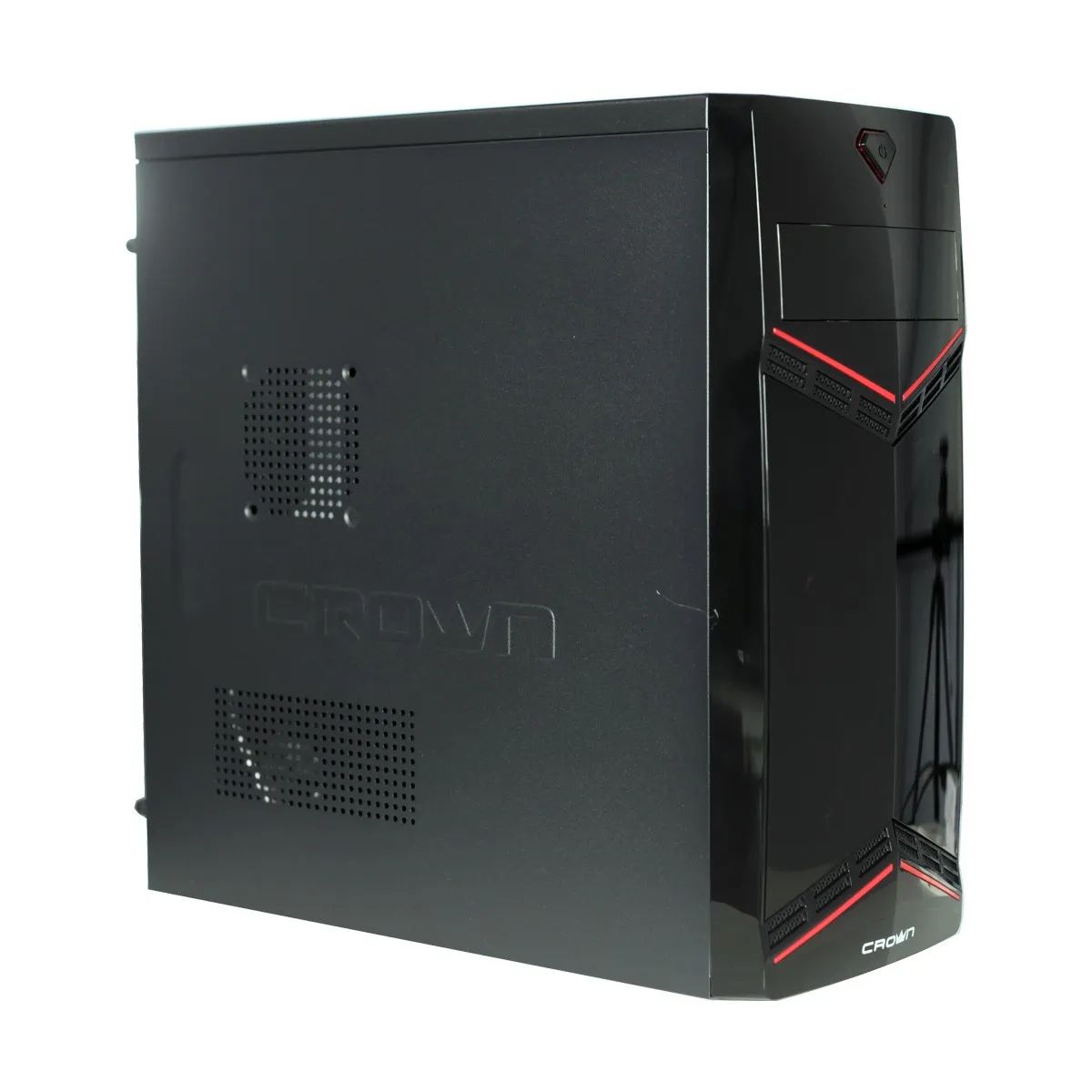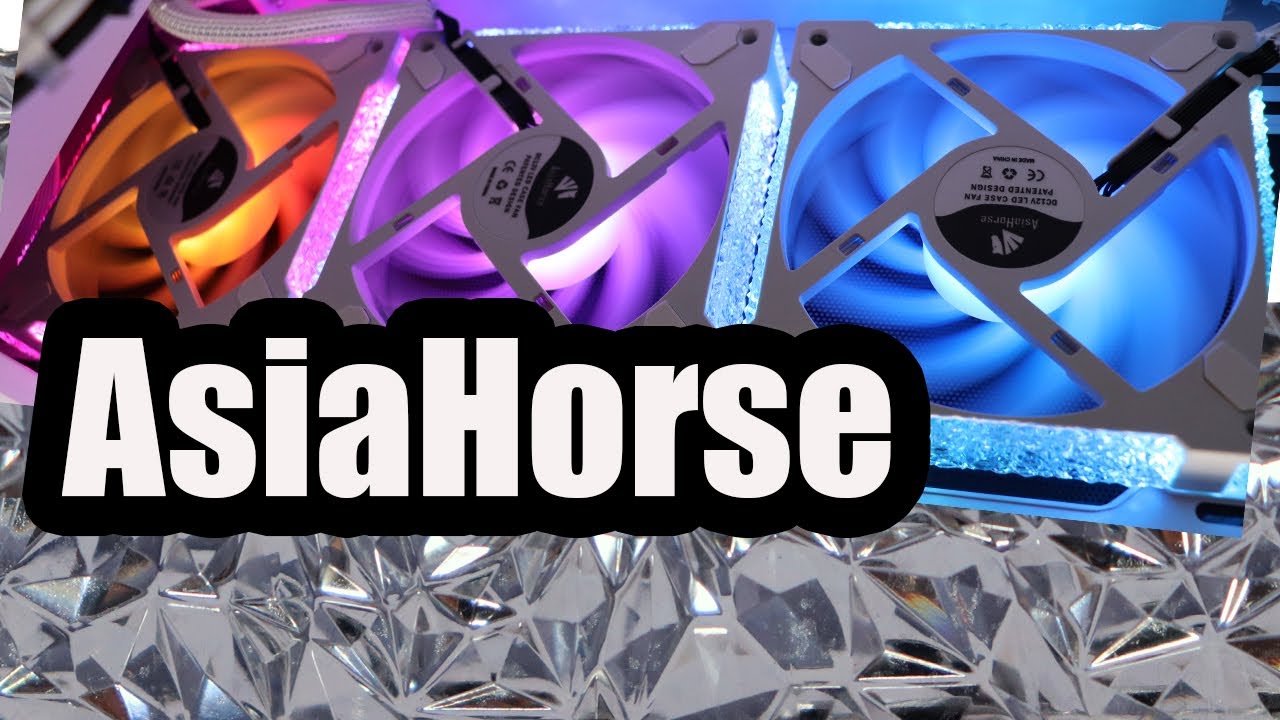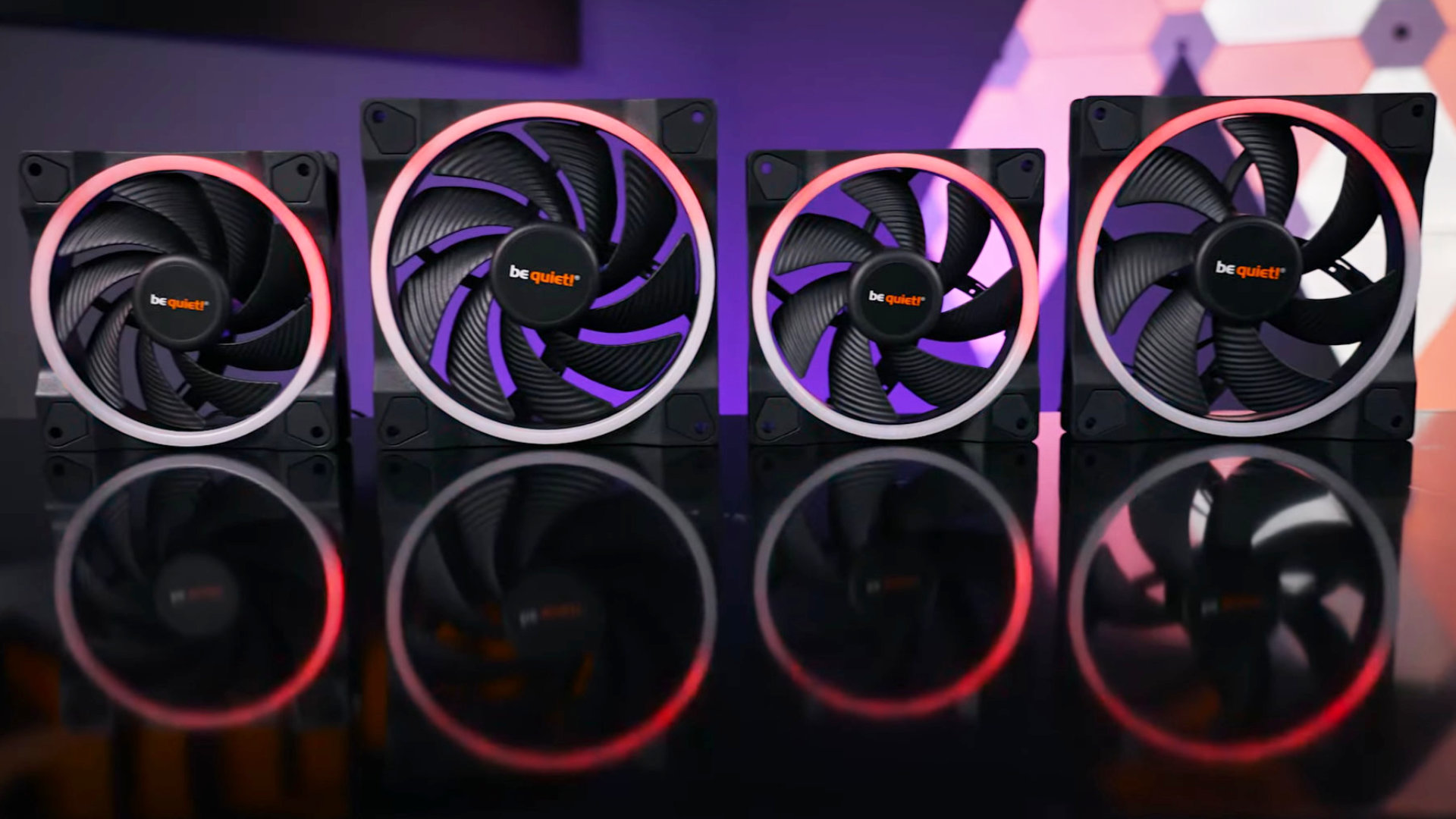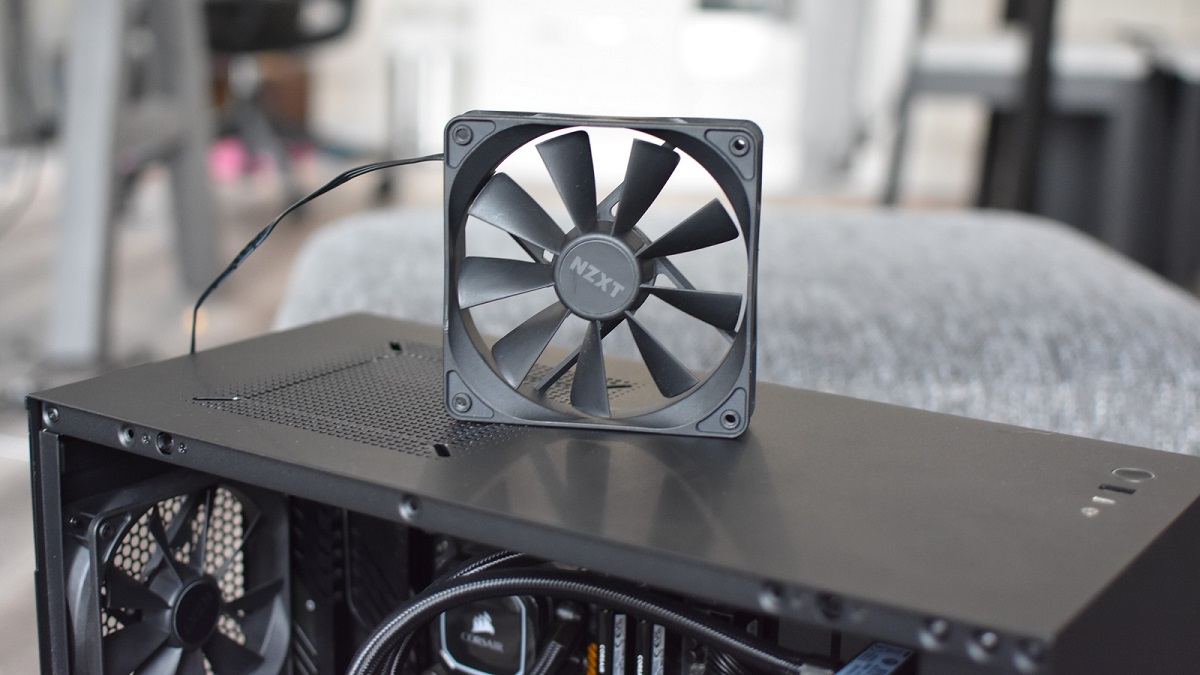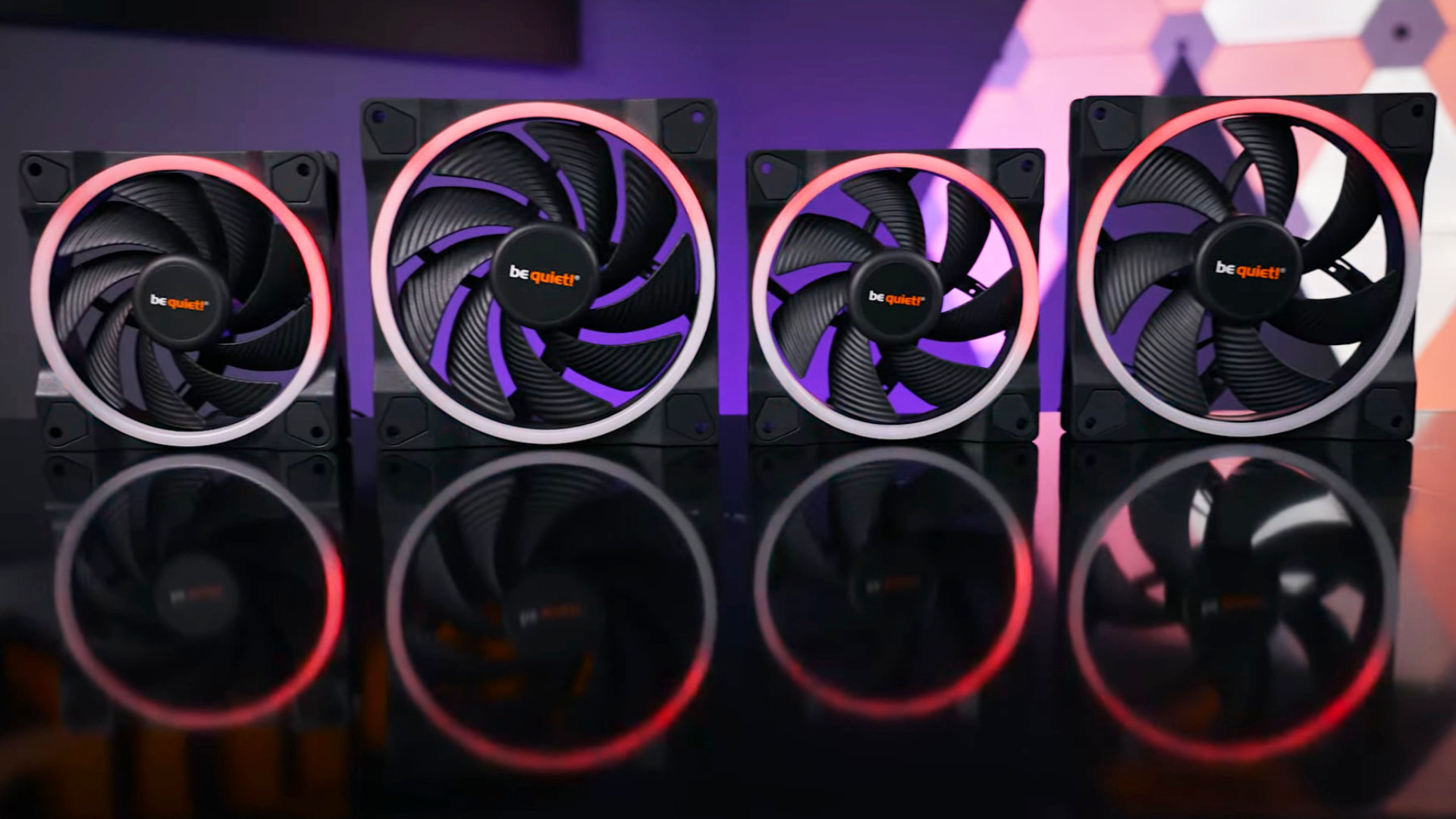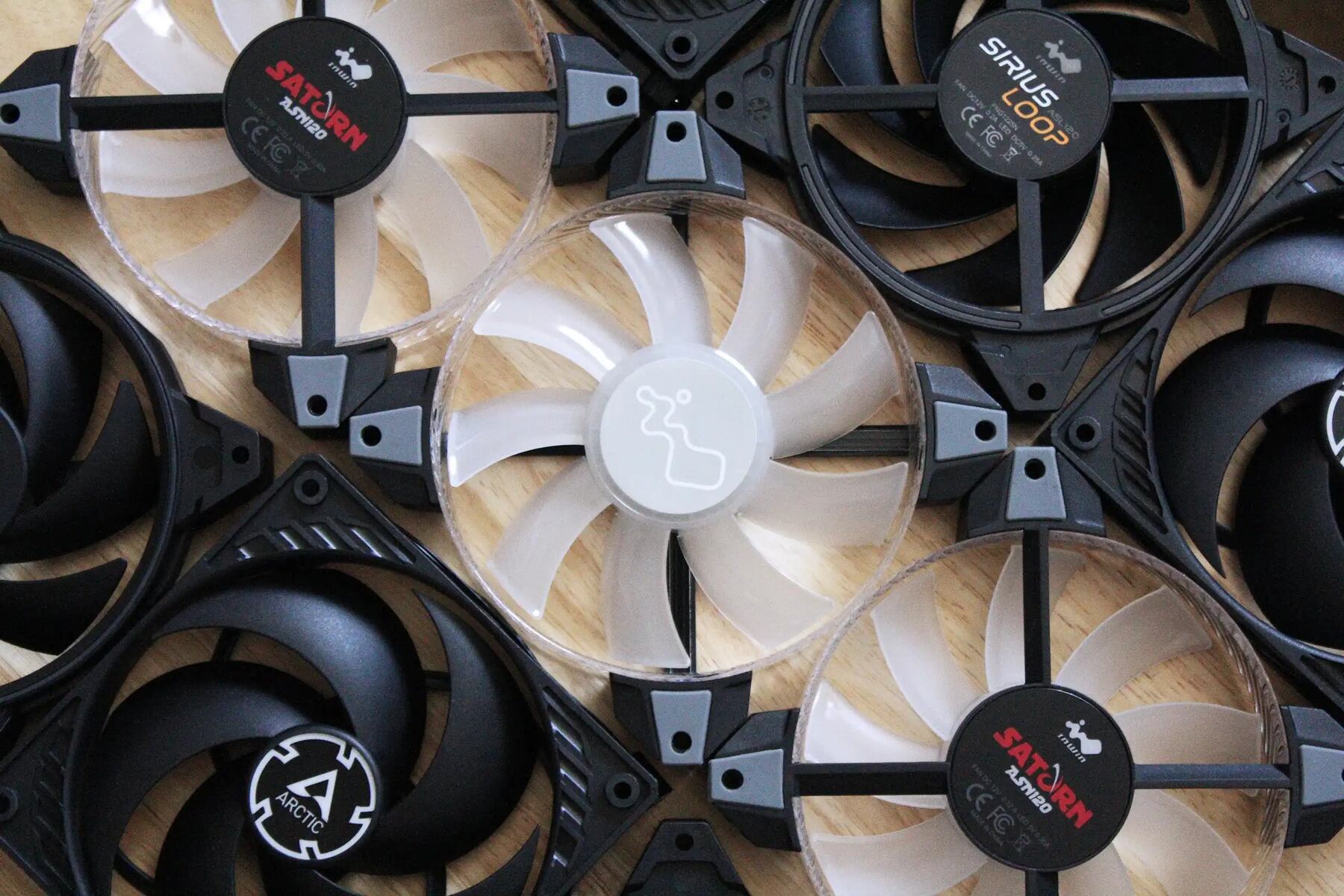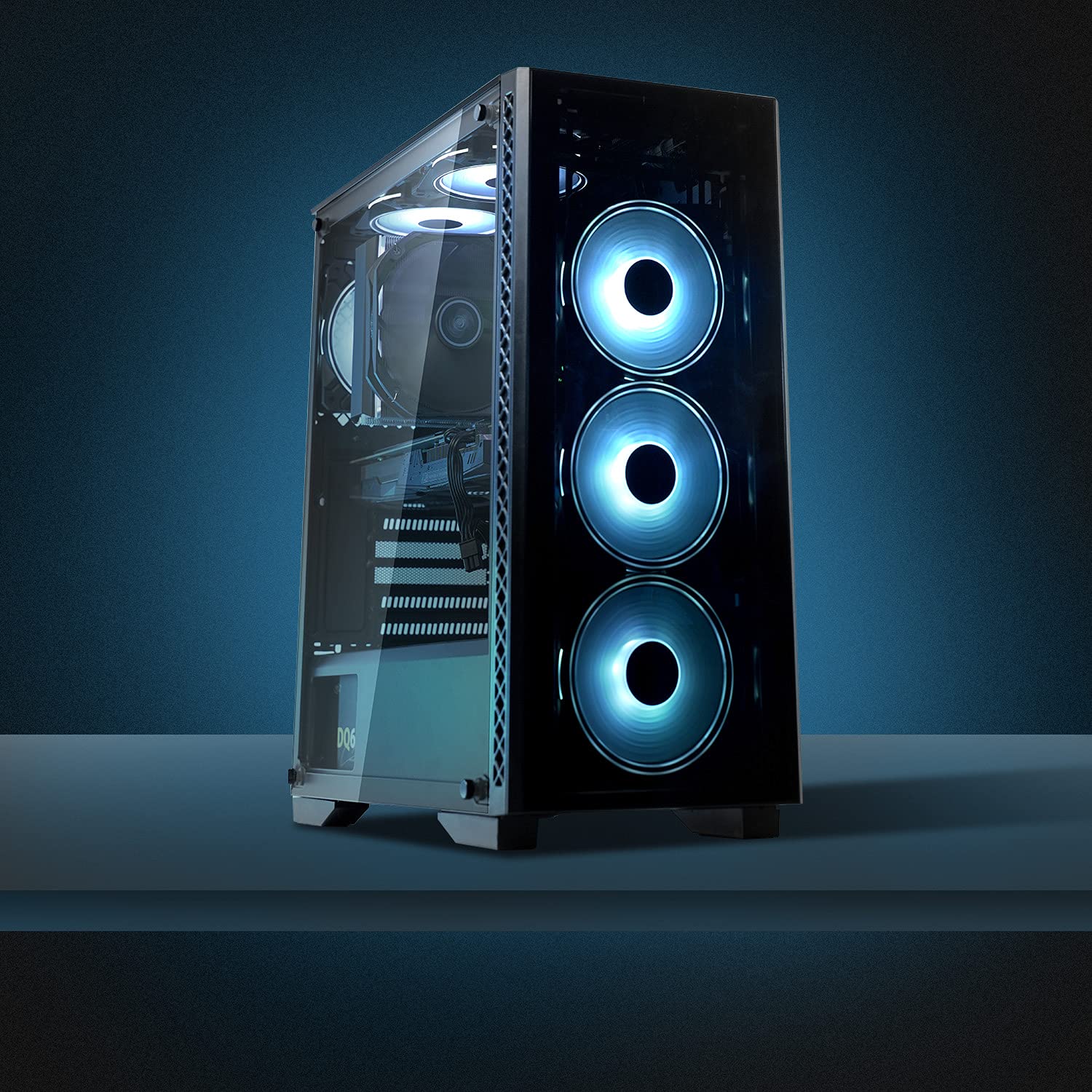Introduction
Welcome to the world of silent computing! In a technology-driven era where our lives are intertwined with electronic devices, having a PC that operates quietly has become a top priority for many users. Whether you’re a content creator, a gamer, or simply a casual user, a noisy PC can be a major distraction and hinder your productivity. One of the main sources of noise in a PC is the case fan, which is responsible for cooling critical components and maintaining optimal performance.
Quiet PC case fans are specially designed to strike a balance between cooling efficiency and noise reduction. These fans are engineered to minimize turbulence, vibrations, and motor noise, allowing you to enjoy a quieter computing experience without compromising on performance. However, choosing the right quiet case fan can be a daunting task, as there are numerous factors to consider.
In this article, we will delve into the world of quiet PC case fans and explore the key factors you should consider when choosing one. We will discuss noise level measurement, airflow, static pressure, blade design, bearing types, and fan control options. Additionally, we will highlight some of the top quiet PC case fans available on the market today.
So, if you’re tired of your PC sounding like a jet engine or simply want to optimize the noise level of your system, keep reading to discover the perfect quiet case fan that will bring serenity to your computing experience.
Factors to Consider When Choosing a Quiet PC Case Fan
When it comes to selecting a quiet PC case fan, there are several crucial factors to consider. By taking these factors into account, you can ensure that you choose a fan that not only operates silently but also effectively cools your components. Here are the key factors you should keep in mind:
- Noise Level: The primary reason for opting for a quiet case fan is to minimize noise. Fans are rated in decibels (dB), with lower dB ratings indicating quieter operation. Look for fans with a low noise level, ideally rated below 20 dB, to ensure a peaceful computing experience.
- Airflow: The airflow produced by a case fan is measured in cubic feet per minute (CFM). Higher CFM values indicate that the fan can move more air, resulting in better cooling performance. However, it’s essential to strike a balance between airflow and noise level to find a fan that meets your requirements.
- Static Pressure: Static pressure is a crucial factor for cooling efficiency, particularly when dealing with restrictive airflow conditions. High static pressure fans are better suited for situations where there are obstacles, such as heatsinks or radiators, as they can push air through these tight spaces effectively.
- Blade Design: The design of the fan blades plays a crucial role in both airflow and noise reduction. Look for fans with well-designed blades that minimize turbulence and noise. Features like angled blades, curved profiles, and anti-vibration mounts can greatly contribute to quieter operation.
- Bearing Types: The bearing type of a case fan affects both noise levels and durability. Common bearing types include sleeve bearings, rifle bearings, and fluid dynamic bearings (FDB). Fans with FDB or similar advanced bearing types offer quieter operation and longer lifespans compared to sleeve-bearing fans.
- PWM vs. DC Fans: Fan control is another essential consideration for quiet computing. Case fans can be categorized into two types: PWM (Pulse Width Modulation) fans and DC (Direct Current) fans. PWM fans offer more precise control over fan speed, allowing for quieter operation when lower temperatures are detected.
By considering these factors, you can narrow down your options and choose a quiet PC case fan that perfectly suits your needs. Remember, finding the right balance between cooling performance and noise reduction is essential for a serene and efficient computing experience.
Noise Level Measurement: Decibels (dB)
When it comes to measuring the noise level of a quiet PC case fan, decibels (dB) are used as the standard unit. Decibels quantify the intensity or loudness of sound. In the context of PC fans, a lower dB rating indicates quieter operation. Understanding how decibels are measured and their effects can help you choose a case fan with the right noise level for your needs.
Decibel measurements are logarithmic, which means each increase of 10 dB represents a tenfold increase in sound intensity. For example, a fan rated at 20 dB is ten times quieter than a fan rated at 30 dB. As a general guideline, a typical conversation between two people falls within the range of 50-60 dB, while quieter environments such as libraries may be around 30 dB.
When it comes to quiet PC case fans, you can find fans with noise levels ranging from as low as 10 dB to around 30 dB. Fans rated between 10-20 dB are considered extremely quiet and are ideal for noise-sensitive environments or users who prioritize a silent computing experience.
Keep in mind that the noise level of a fan is highly dependent on its operating speed. Most fans come with multiple speed settings, and the noise level increases as the fan speed is ramped up. However, modern fans often come equipped with built-in fan controllers or can be controlled through software, allowing you to adjust the fan speed to strike a balance between cooling performance and noise level.
It’s important to note that perception of noise can also vary from person to person. Factors such as room acoustics, ambient noise levels, and personal sensitivity to sound can influence how loud or quiet a fan appears. Thus, it’s a good idea to consider reviews or user feedback to get a sense of how a fan’s noise level is perceived in real-world scenarios.
When selecting a quiet PC case fan, aim for a noise level that suits your preferences and environment. If you prioritize absolute silence, look for fans with dB ratings below 20. Alternatively, if you are comfortable with a bit more noise, you may opt for fans in the 20-30 dB range, which can still provide a significant reduction in noise compared to standard fans.
By understanding the concept of decibels and considering your personal noise tolerance, you can make an informed decision when selecting a quiet PC case fan that aligns with your needs and expectations.
Understanding Airflow: Cubic Feet per Minute (CFM)
When it comes to choosing a quiet PC case fan, understanding the concept of airflow is essential. Airflow is the amount of air that a fan can move in a given time, and it is typically measured in cubic feet per minute (CFM). The CFM value indicates the fan’s ability to provide cooling to your PC components.
A fan with higher CFM can move more air through the system, resulting in improved cooling efficiency. However, it’s important to strike a balance between airflow and noise level. While high CFM values provide better cooling, they often come with increased noise due to the fan’s higher rotation speed.
When considering airflow, it’s crucial to evaluate your specific cooling needs. Components such as processors and graphics cards generate heat, and proper airflow is necessary to dissipate that heat effectively. Insufficient airflow can lead to higher temperatures, which may cause performance degradation or even component failure.
As a general rule of thumb, a mid-range PC case typically requires a minimum of 50-75 CFM for effective cooling. High-performance PCs, gaming rigs, or systems with multiple high-power components may require higher CFM values to maintain optimal temperatures.
It’s worth noting that different areas of your PC case may require different airflow patterns. Components such as the CPU, GPU, and power supply may have heat dissipation requirements, and airflow should be directed accordingly. Planning the arrangement of fans in your case to promote efficient airflow can help maximize cooling performance.
While CFM is an important consideration, it’s not the sole factor determining cooling performance. Other factors, such as static pressure and the overall case cooling design, also play significant roles in maintaining low temperatures. A fan with high CFM but low static pressure may struggle to overcome resistance from obstacles such as heatsinks or radiators.
When selecting a quiet PC case fan, consider your specific cooling requirements and the airflow needs of your components. Aim for a fan that provides adequate CFM for efficient cooling, but be mindful of noise levels. Striking the right balance between airflow and noise will help ensure optimal performance and a quieter computing experience.
Static Pressure: A Crucial Factor for Cooling Efficiency
When it comes to choosing a quiet PC case fan, static pressure is a critical factor to consider. While airflow (measured in cubic feet per minute or CFM) determines the volume of air moved by a fan, static pressure is what allows the fan to push air through restricted spaces, such as heatsinks or radiators, effectively.
Static pressure is measured in millimeters of water column (mmH2O) and indicates the fan’s ability to overcome resistance and maintain airflow in challenging conditions. Components like CPU coolers and liquid cooling radiators require fans that can generate sufficient static pressure to efficiently dissipate heat.
Higher static pressure fans are designed with features that enable them to push air through restricted areas. These fans typically have enhanced blade designs with larger curvatures or angled blades, allowing them to maintain higher pressure even when faced with obstacles. Additionally, fans with rubberized or anti-vibration mounts can also help reduce vibration and noise, ensuring smooth and efficient airflow.
It’s important to note that static pressure comes at the cost of increased noise. Fans that can generate higher static pressure often require higher rotational speeds, resulting in louder operation. Therefore, striking a balance between cooling performance and noise level becomes crucial when selecting a case fan.
However, keep in mind that static pressure needs vary depending on your system configuration and cooling requirements. If you’re using a standard air cooling setup, fans with moderate static pressure ratings should suffice. On the other hand, if you’re utilizing a liquid cooling system or have densely packed components, fans with high static pressure ratings are recommended for optimal performance.
When selecting a case fan with static pressure in mind, consider the specific cooling needs of your components. Take into account the presence of heatsinks, radiators, or other restrictive areas that may require enhanced airflow. It’s advisable to check the CPU or GPU cooler manufacturer’s recommendations for suitable static pressure ranges to ensure compatibility and efficient heat dissipation.
By choosing a quiet PC case fan that strikes the right balance between static pressure and noise level, you can ensure efficient cooling performance while maintaining a peaceful computing environment.
Blade Design: Minimizing Turbulence and Noise
When it comes to selecting a quiet PC case fan, the design of the fan blades plays a crucial role in both airflow and noise reduction. Blade design directly impacts the fan’s ability to move air efficiently while minimizing turbulence and noise.
Fans with well-designed blades are engineered to optimize airflow by reducing resistance and turbulence. This results in smoother airflow and quieter operation. Several blade design features contribute to achieving this goal:
- Angled Blades: Angled blades are curved or bent at specific angles to improve airflow and reduce noise. By redirecting and focusing the airflow, angled blades can minimize turbulence and increase the overall cooling efficiency.
- Curved Profiles: Curved fan blades are designed to mimic the shape of an airplane wing, allowing for more efficient airflow. This design feature helps to reduce noise by promoting smoother airflow and minimizing air disturbances.
- Anti-Vibration Mounts: Some fans come equipped with rubberized or anti-vibration mounts. These mounts dampen vibrations and reduce noise caused by the fan’s motor. By minimizing vibrations, these fans operate more silently and contribute to an overall quieter computing experience.
Additionally, fan blade density and shape also impact noise levels. Fans with higher blade densities tend to generate less noise as they can move more air with each rotation. However, it’s crucial to strike a balance between blade density and fan speed, as higher blade densities often require higher fan speeds, which can lead to increased noise.
It’s worth noting that different fan models may have unique blade designs, and not all blade designs are suitable for every scenario. The best blade design will depend on your specific cooling needs and the configuration of your PC case. Evaluating factors such as component positioning, airflow restrictions, and noise requirements will guide you in selecting the most appropriate blade design for your system.
By choosing a quiet PC case fan with well-designed blades, you can ensure more efficient airflow, reduced turbulence, and minimized noise. These fans not only contribute to a quieter computing environment but also help maintain optimal cooling performance for your components.
Bearing Types: Choosing the Right Fan for Durability and Noise Reduction
When it comes to choosing a quiet PC case fan, one crucial aspect to consider is the bearing type. The bearing type not only affects the fan’s durability but also plays a significant role in reducing noise levels. Different bearing types offer varying levels of noise reduction and longevity. Understanding the different bearing types available can help you choose the right fan for your needs:
- Sleeve Bearings: Sleeve bearings are the most basic and affordable type of bearing. They consist of a sleeve or collar around the fan’s spindle to reduce friction. While sleeve-bearing fans are relatively quiet at lower speeds, they tend to produce more noise and have a shorter lifespan compared to other bearing types.
- Rifle Bearings: Rifle bearings are an improvement over sleeve bearings. They feature an oil-based lubricant that reduces friction and improves the fan’s lifespan. Rifle-bearing fans typically produce less noise and offer better durability compared to sleeve-bearing fans.
- Fluid Dynamic Bearings (FDB): Fluid dynamic bearings utilize a thin layer of fluid to reduce friction and provide enhanced durability. FDB fans offer quieter operation due to the reduced friction and improved stability. These fans are often the top choice for those seeking a quiet PC case fan with a longer lifespan.
- Ball Bearings: Ball bearings consist of small metal balls placed between the fan’s axle and housing. Ball-bearing fans offer excellent durability and longevity, making them suitable for continuous operation. They are relatively quiet, although they may produce more noise at higher speeds compared to FDB fans.
When it comes to selecting a quiet case fan, fans with FDB or ball bearings are typically the preferred choice. These bearing types offer improved noise reduction and increased durability, ensuring a quieter and longer-lasting fan operation. However, it’s important to note that fans with advanced bearing types may come at a slightly higher price point compared to sleeve or rifle-bearing fans.
Additionally, it’s worth mentioning that some manufacturers have introduced hybrid or proprietary bearing types, combining the advantages of different bearing technologies. These hybrid bearings aim to provide the best of both worlds—superior noise reduction and excellent durability.
Considering the bearing type when choosing a quiet PC case fan is essential for minimizing noise levels and maximizing fan lifespan. Invest in fans with high-quality bearing technologies to enjoy a quieter computing experience with improved fan longevity.
PWM vs. DC Fans: Controlling Fan Speed for Silent Operation
When it comes to achieving silent operation in your PC, controlling fan speed is crucial. Two common types of fans used in PC systems are PWM (Pulse Width Modulation) fans and DC (Direct Current) fans. Understanding the differences between these fan types can help you select the right one for a quieter computing experience.
PWM Fans: PWM fans have an additional fourth pin on their connector that allows for more precise control of fan speed. The fan speed is adjusted by varying the pulse width of the input voltage. A PWM-enabled motherboard or fan controller can dynamically adjust the fan speed based on temperature fluctuations in real-time. This technology allows PWM fans to operate more silently compared to DC fans.
With PWM fans, your system can maintain a low noise level during periods of low heat production or less demanding tasks. When the system temperature increases, the fan speed can ramp up accordingly to provide adequate cooling. This control mechanism allows you to strike a perfect balance between cooling performance and noise level, resulting in a quieter and more efficient computing experience.
DC Fans: DC fans, on the other hand, operate at a constant voltage and speed. The fan speed is typically controlled through a voltage regulator, adjusting the voltage supplied to the fan motor. While DC fans can offer reliable cooling, they lack the dynamic control capabilities of PWM fans. They generally have set speed options, resulting in less flexibility for noise reduction.
However, it’s important to note that some DC fans come with built-in speed switches or resistors that allow for limited adjustments in fan speed. This feature provides some control over noise levels but is not as precise or versatile as PWM technology.
To achieve the quietest operation, opting for PWM fans is recommended. Pairing PWM fans with a PWM-enabled motherboard or fan controller gives you granular control over fan speed and enables the system to adapt to thermal changes quickly. This allows for optimal cooling performance when it’s needed while keeping noise levels to a minimum during idle or less demanding tasks.
However, if you have specific constraints or requirements, such as a fixed fan speed for a particular application, DC fans with built-in adjustments may still be a viable option. Evaluate your needs and system setup to determine which fan control method suits you best.
By selecting the right fan control technology for your system, you can enjoy silent operation during normal use while ensuring effective and efficient cooling when the workload demands it.
Top Quiet PC Case Fans on the Market
When it comes to choosing a quiet PC case fan, there are several exceptional options available on the market. These fans combine advanced technologies, thoughtful design, and superior performance to provide a silent and efficient cooling solution. Here are some of the top quiet PC case fans currently highly regarded by users and experts:
- Noctua NF-P12 redux-1700 PWM: With its renowned build quality and exceptional performance, the Noctua NF-P12 redux-1700 PWM is a popular choice for quiet PC enthusiasts. It features a wide speed range, offering flexibility in balancing noise levels and cooling efficiency. The fan’s blade design and innovative motor contribute to its low noise operation.
- be quiet! SilentWings 3 PWM: The be quiet! SilentWings 3 PWM fan is revered for its near-silent operation and outstanding cooling capabilities. Its advanced airflow-optimized fan blades, six-pole fan motor, and fluid dynamic bearing work together to provide efficient cooling with minimal noise output.
- Corsair ML120 Pro LED: Corsair’s ML120 Pro LED fan combines magnetic levitation technology with custom rotor design to deliver exceptional performance and low noise levels. The fan’s magnetic levitation bearing reduces friction, eliminating noise and increasing fan longevity. The vibrant LED lighting is an added bonus for those seeking aesthetic appeal.
- Noctua NF-A14 PWM: The Noctua NF-A14 PWM fan is another highly regarded option from Noctua. Its advanced aerodynamic design and optimized fan blade geometry ensure optimal airflow and minimal noise production. The fan’s renowned SSO2 bearing and integrated anti-vibration pads contribute to its quiet and reliable operation.
- Fractal Design Venturi HF-14: The Fractal Design Venturi HF-14 fan focuses on providing powerful airflow with low noise levels. Its unique design features a seven-blade airflow-optimized fan and integrated vibration-dampening corners for quiet and efficient cooling. The HF-14 fan is a go-to choice for users who prioritize both performance and silence.
These are just a few examples of the top quiet PC case fans available on the market. Each fan offers its unique set of features and advantages, so consider your specific needs and preferences when selecting the best fan for your system.
Remember, it’s important to conduct further research, read reviews, and consider factors such as noise levels, airflow performance, static pressure, and bearing types to ensure you choose the perfect quiet PC case fan that meets your requirements.
Noctua NF-P12 redux-1700 PWM
The Noctua NF-P12 redux-1700 PWM is a top-rated quiet PC case fan that has gained a reputation for its exceptional quality and performance. This 120mm fan from Noctua provides a perfect balance between cooling power and silent operation. Let’s explore some key features and benefits of the NF-P12 redux-1700 PWM:
Advanced Blade Design: The NF-P12 redux-1700 PWM features nine wide-blade design for enhanced airflow and efficient cooling. The fan blades are engineered to minimize turbulence and optimize static pressure, providing excellent cooling performance while keeping noise levels low.
Extended Speed Range: With a speed range of 450 to 1700 RPM (Rotations Per Minute), this fan offers versatility to cater to different cooling needs. Users have the flexibility to adjust the fan speed based on their preferences and system requirements, ensuring optimal cooling efficiency while maintaining low noise levels.
PWM Control: Equipped with PWM control, the NF-P12 redux-1700 PWM allows for precise and automatic fan speed regulation. The fan’s speed can be dynamically adjusted based on thermal conditions, ensuring that it operates at the optimal level for both cooling and noise reduction. The PWM control capability makes it a preferred choice for those seeking a quiet computing experience.
Silent Operation: Noctua is renowned for its dedication to delivering quiet fans, and the NF-P12 redux-1700 PWM is no exception. With the use of advanced technologies, the fan operates at minimal noise levels, even at higher speeds. This makes it ideal for noise-sensitive environments such as recording studios, offices, or quiet home setups.
Longevity and Reliability: The NF-P12 redux-1700 PWM boasts Noctua’s SSO (Self-Stabilizing Oil-pressure) bearing, which ensures smooth and quiet operation even after prolonged use. The bearing’s self-lubricating design reduces friction and improves the fan’s lifespan, providing years of reliable and efficient cooling performance.
Easy Installation: Noctua products are known for their user-friendly installation process, and the NF-P12 redux-1700 PWM is no different. It comes with a standard 120mm mounting hole pattern, making it compatible with a wide range of PC cases and cooling setups. The fan also includes anti-vibration pads to minimize noise caused by vibrations.
The Noctua NF-P12 redux-1700 PWM is a highly recommended choice for users seeking a quiet PC case fan with outstanding performance and reliability. With its advanced blade design, PWM control, and silent operation, it strikes an excellent balance between efficient cooling and low noise levels. Whether you are a PC enthusiast, gamer, or professional, this fan delivers on its promise of a quiet computing experience without compromising on cooling performance.
be quiet! SilentWings 3 PWM
The be quiet! SilentWings 3 PWM is widely recognized as one of the top choices for a quiet PC case fan. It combines exceptional build quality, advanced features, and superior performance to provide silent operation and efficient cooling. Let’s explore some key features and benefits of the SilentWings 3 PWM:
Optimized Airflow: The SilentWings 3 PWM features an advanced six-pole motor design and airflow-optimized fan blades. This design ensures effective airflow with minimal turbulence, providing excellent cooling performance while keeping noise levels to a minimum.
PWM Control: With its PWM control functionality, the SilentWings 3 PWM enables precise and automatic fan speed regulation. This allows the fan to adapt to thermal conditions and adjust its speed accordingly, ensuring a perfect balance between cooling power and noise reduction. The ability to control the fan speed makes it an ideal choice for maintaining a quiet computing environment.
Fluid Dynamic Bearing: Equipped with a sophisticated fluid dynamic bearing (FDB), the SilentWings 3 PWM offers smooth and silent operation. The FDB reduces friction, minimizes noise, and improves the fan’s lifespan, making it a reliable and long-lasting choice for quiet PC enthusiasts.
Great Noise Reduction: The SilentWings 3 PWM lives up to its name by delivering virtually silent operation at low fan speeds. The combination of the high-quality bearing, advanced motor design, and optimized blade geometry contributes to its whisper-quiet performance, ensuring a peaceful computing experience.
High-Quality Construction: be quiet! is known for its exceptional build quality, and the SilentWings 3 PWM is no exception. The fan features a durable frame, rubberized mounting elements, a low-vibration motor, and airflow-optimized fan blades. These features not only enhance performance but also help reduce vibrations and noise caused by operation.
Aesthetically Pleasing Design: The SilentWings 3 PWM comes with sleek black fan blades and a frame that matches a variety of PC builds. It blends seamlessly into any system setup while providing superior performance and silent operation.
Whether you’re a professional content creator, an avid gamer, or a user seeking a quiet computing experience, the be quiet! SilentWings 3 PWM is an excellent choice. With its optimized airflow, PWM control, fluid dynamic bearing, and exceptional build quality, it delivers on its promise of silent operation and efficient cooling. This fan is a testament to be quiet!’s commitment to producing high-quality, low-noise PC components.
Corsair ML120 Pro LED
The Corsair ML120 Pro LED is a popular choice among PC enthusiasts seeking a combination of exceptional performance, quiet operation, and attractive aesthetics. This fan brings together innovative features and advanced technologies to provide efficient cooling and a visually appealing lighting experience. Let’s explore some key features and benefits of the Corsair ML120 Pro LED:
Magnetic Levitation Technology: The ML120 Pro LED utilizes Corsair’s unique magnetic levitation (ML) technology. This innovative design eliminates the need for traditional ball or sleeve bearings, reducing friction and noise. The result is a fan that operates quietly and lasts longer due to reduced wear on the bearings.
Dynamic Fan Speed Control: The ML120 Pro LED boasts a wide range of fan speeds, allowing for flexible control over cooling performance and noise levels. Thanks to PWM control, the fan speed can be adjusted on-the-fly, ensuring optimal cooling efficiency while maintaining a quiet computing experience.
Vibrant LED Lighting: With its built-in LEDs, the ML120 Pro LED adds a touch of style to any PC build. The LEDs provide vibrant lighting and can be synchronized with other Corsair components to create a unified lighting effect. Whether you prefer a subtle glow or a more vibrant lighting display, this fan offers customizable lighting options to suit your preference.
Quiet and Efficient Operation: The combination of magnetic levitation technology and precisely balanced fan blades enables the ML120 Pro LED to operate almost silently, even at higher speeds. The fan provides excellent airflow while keeping noise levels to a minimum, making it an ideal choice for those seeking a quiet computing environment without compromising on cooling performance.
Durable Construction: Built with durability in mind, the ML120 Pro LED features a sturdy frame and high-quality components. This fan is designed to withstand the demands of continuous operation while maintaining its performance and reliability. The durable construction ensures long-lasting performance for years to come.
Easy Installation: The ML120 Pro LED is designed for easy installation in various PC cases. It features standard 120mm mounting holes, making it compatible with a wide range of case setups. The fan is also equipped with anti-vibration rubber dampers to reduce noise caused by vibrations.
The Corsair ML120 Pro LED is a high-performance PC case fan that delivers both impressive cooling capabilities and a visually striking lighting effect. With its magnetic levitation technology, dynamic fan speed control, vibrant LED lighting, and durable construction, this fan is an excellent choice for those seeking both functionality and aesthetics. Experience efficient, quiet cooling with a touch of style in your PC build with the Corsair ML120 Pro LED.
Noctua NF-A14 PWM
The Noctua NF-A14 PWM is a highly regarded quiet PC case fan that offers exceptional performance and superior noise reduction. It is specifically designed to meet the needs of users who prioritize silent operation and efficient cooling. Let’s explore some key features and benefits of the Noctua NF-A14 PWM:
Advanced Aerodynamic Design: The NF-A14 PWM features Noctua’s renowned aerodynamic design with Flow Acceleration Channels. These channels reduce turbulence and optimize airflow, resulting in improved cooling efficiency and reduced noise levels. The fan’s advanced blade geometry ensures quiet operation while maintaining excellent airflow.
PWM Control: With its integrated PWM control, the NF-A14 PWM allows for precise and automatic fan speed adjustment. This feature enables the fan to adapt to changing thermal conditions, providing optimal cooling performance while minimizing noise. The PWM control ensures that the fan operates at the most efficient speed for a quiet computing experience.
Low-Noise Operation: Noctua is recognized for its commitment to producing low-noise fans, and the NF-A14 PWM is a testament to this dedication. With its optimized design and high-quality components, this fan operates at remarkably low noise levels, even at higher speeds. It is perfect for users who require near-silent operation in their PC builds.
SSO2 Bearing: The NF-A14 PWM incorporates Noctua’s premium SSO2 (Second Generation Self-Stabilizing Oil Pressure) bearing. The SSO2 bearing ensures smooth and quiet operation, while also extending the fan’s lifespan. This advanced bearing technology minimizes friction and eliminates noise caused by the fan’s motor, providing reliability and durability.
Integrated Anti-Vibration Pads: To further reduce vibrations and noise, the NF-A14 PWM is equipped with integrated anti-vibration pads. These pads minimize the transmission of vibrations from the fan to the PC case, resulting in a more silent operation. The anti-vibration pads contribute to a smooth and quiet computing experience.
Easy Installation and Compatibility: The NF-A14 PWM is designed for easy installation and compatibility with various PC cases and CPU coolers. It features standard 140mm mounting holes and comes with included mounting hardware. The fan’s design and dimensions ensure compatibility with a wide range of setups, making it a versatile choice.
The Noctua NF-A14 PWM is an excellent option for users seeking a quiet PC case fan with exceptional performance. With its advanced aerodynamic design, PWM control, low-noise operation, SSO2 bearing, and anti-vibration pads, this fan delivers on its promise of providing excellent cooling performance with minimal noise. Experience quiet and efficient cooling with the Noctua NF-A14 PWM for your PC build.
Fractal Design Venturi HF-14
The Fractal Design Venturi HF-14 is a highly regarded quiet PC case fan known for its powerful airflow and silent operation. It combines high-quality construction, advanced features, and exceptional performance to deliver optimal cooling with minimal noise. Let’s dive into some key features and benefits of the Fractal Design Venturi HF-14:
High Airflow Design: The Venturi HF-14 is designed to provide powerful airflow while maintaining quiet operation. With its seven blades and a unique airflow-optimized fan hub, this fan effectively moves a substantial amount of air throughout your PC case, ensuring efficient cooling without generating excessive noise.
Vibration-Dampening Corners: The Venturi HF-14 is equipped with vibration-dampening corners that reduce vibrations and contribute to a quieter operation. These corners help to minimize noise caused by fan vibrations, ensuring a more enjoyable and silent computing experience.
Hydraulic Bearing: This fan features a long-lasting hydraulic bearing, which provides silent operation and ensures a longer lifespan compared to traditional sleeve bearings. The hydraulic bearing design reduces friction and noise, allowing for smooth and reliable fan performance even during prolonged use.
Enhanced Frame Construction: Fractal Design has meticulously designed the Venturi HF-14 for durability and stability. The fan boasts a sturdy frame with reinforced blades that prevent flex and minimize noise generation. The robust construction adds to the overall reliability and longevity of the fan.
Airflow Versatility: The Venturi HF-14 is designed with versatility in mind. Whether you require high airflow or priorit
Conclusion
Choosing a quiet PC case fan is essential for achieving a silent and efficient computing experience. With numerous options available on the market, considering factors such as noise level, airflow, static pressure, blade design, bearing types, and fan control options is crucial. By understanding the key features and advantages of different fans, you can make an informed decision based on your specific needs and preferences.
The Noctua NF-P12 redux-1700 PWM stands out as a top choice, offering a perfect balance between cooling power and silent operation. Its advanced blade design, extended speed range, PWM control, and silent operation make it an excellent option for those seeking efficient and quiet cooling performance.
The be quiet! SilentWings 3 PWM is another exceptional fan known for its near-silent operation, optimized airflow, and high-quality construction. Its fluid dynamic bearing, great noise reduction capabilities, and ease of installation make it an ideal choice for users prioritizing silent operation.
The Corsair ML120 Pro LED brings innovation to the table with its magnetic levitation technology, dynamic fan speed control, vibrant LED lighting, and quiet and efficient operation. It is a suitable choice for users looking for both performance and aesthetics in their PC builds.
Noctua NF-A14 PWM impresses with its advanced aerodynamic design, PWM control, low-noise operation, and SSO2 bearing. With its superior performance and durability, it offers a high-quality cooling solution for those desiring a silent computing experience.
Lastly, the Fractal Design Venturi HF-14 excels in powerful airflow, vibration-dampening corners, hydraulic bearing, enhanced frame construction, and airflow versatility. It provides reliable and efficient cooling with minimal noise for various PC setups.
Whichever quiet PC case fan you choose, remember to evaluate your cooling requirements, noise tolerance, and system compatibility to ensure the best performance. With the right fan, you can enjoy a peaceful and efficient computing experience while maintaining optimal temperatures for your components. Embrace the tranquility of a well-cooled and whisper-quiet PC with a top-notch quiet PC case fan.







